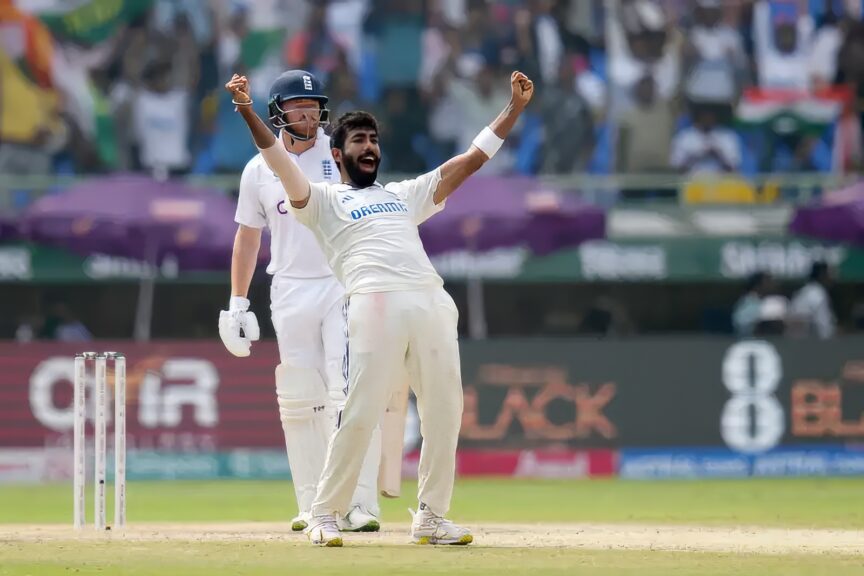India’s four-One victory over England can hardly be described as a shock, still less a surprise.
Before going any further, a few simple facts.
First, England have not suddenly become a bad team. Such a transformation would not be unprecedented. Of the seventeen Tests played by England before the appointments of Brendon “Baz” McCullum as coach and Ben Stokes as captain, they won one. That, like it or not, is the sign of a poor side. Of their next ten Tests, they won nine and lost won, winning three series (two at home) and drawing the “left-over” 2022 series against India. That is surely the sign of a very good side. Since then, ignoring the one-off Test against Ireland, they have played three series against arguably the strongest Test-playing countries in the world, in chronological order, New Zealand, Australia and India. They drew the first two – they threw away a winning position in the second Test at Wellington, and many people would argue that they should have won back The Ashes even leaving aside the rain at Manchester. So the McCullum-Stokes series record – leaving aside India 2021 and Ireland – is P 6, W 3, D 2, L 1. That’s not bad.
Secondly, there is India’s record at home.
Ravindra Jadeja made his debut in the fourth and final Test against England at Nagpur in 2012-13. England, under Alastair Cook, won that series two-one. India have won every home series they have played since then. I am not saying this is all due to Jadeja. But it is a fact that the Jadeja / R Ashwin combination, combined with a stellar batting line-up, has made India effectively invincible at home. And in Jasprit Bumrah they have arguably the best fast bowler in the world. It is no disgrace to lose to India at home.
Lastly, let’s be objective. When did India last win a series in England? It was 2007. Since then England have won four-nil, three-one and four-one before the latest two-all draw. So let’s not pretend that India are in all sorts and conditions, a much better side than England. When they last met in a Test match on English soil the home side won the match by scoring 378 for three in the fourth innings at a rate of 4.93 runs an over. That said, India have won their last two series in Australia, which England emphatically haven’t.
But back to India v England 2023-24. As I said at the start, the result was no surprise; many pundits took the view that England ought to be able to win one game. Nobody could have predicted the circumstances of the win in the first Test at Hyderabad, a victory that owed a great deal to an extraordinary innings from vice-captain Ollie Pope. Rohit Sharma’s India seemed to learn something from the experience. India barely took a backward step for the rest of the series, while England, despite periods of dominance in every match, were never again able to put together periods of concentrated pressure.
One of the reasons why England were thought to be at a significant disadvantage was the quality of their spin bowlers. Leading spinner Jack Leach, worthy, workmanlike, but a leading member of Stokes’ attack, had not been able to play since the Test against Ireland in June 2023, got Injured again in the first Test and missed the rest of the series. The other three principal spinners – Rehan Ahmed, Tom Hartley and Shoaib Ahmed – had played one Test between them and Bashir and Hartley had played hardly any red-ball cricket. But they ended up as two of England’s greatest successes. Only Ashwin, with 26, took more than Hartley’s 22 wickets, while Bashir took 17 in just three Tests. Their composure and resilience under pressure was remarkable. Stokes’ ability to get the best out of these inexperienced young cricketers, as he had with Ahmed in Pakistan fourteen months earlier, was equally commendable.
The forty-one year old James Anderson confounded most, if not all, expectations by playing in four of the matches. There were times, as in the second innings of the second Test at Visakhapatnam, when he seemed to be all over the top order, bowling Sharma with an absolute beauty. Such times were relatively unusual, but he was rarely collared. Mark Wood and Ollie Robinson had minimal impact. The series’ second most depressing statistic was that part-time off-spinner Joe Root bowled more overs than any Indian bowlers other than Ashwin and Jadeja. (The most depressing statistic was that India had seven batters who averaged 40 or over; England had one, Zak Crawley.)
As always when a side is losing, selectors tinker with the bowling attack. The much vaunted top seven remained unchanged throughout the series, despite the fact that two of them, Jonny Bairstow and Ben Foakes, did not reach fifty once, Stokes did so once and Pope and Ben Duckett each made one remarkable century but no other significant contributions. The most successful batter, as in The Ashes, was Crawley; the two openers, in fairness to Duckett, remained a remarkably consistent pair. The most controversial batter was Root, who started the series in uncomfortably skittish mode and ended it safe and steady.
Bazball is a mindset thing, we keep being told. You get that. Even so, many of England’s problems seem to be in the mind. Nobody seems to think it might be a good idea to “bat long” to give the bowlers a bit of a break. Some of the dismissals were just idiotic – Ollie Pope dancing down the wicket to the last ball before lunch in the first innings of the fifth Test at Dharamsala, and getting stumped.
England fans bemoaned the loss of Harry Brook, for personal reasons, but India were without Virat Kohli, Mohammed Shami and Rishabh Pant for the whole series and K L Rahul for most of it. It seemed almost irrelevant; ready-made replacements just turn up.
Say what you like about England nobody can deny they are entertaining. There are some really intriguing contests coming up in the next twenty months or so. India tour Australia in 2024-25, then tour England in 2025; then England go to Australia in 2025-26. My prediction of the end result is that Pat Cummins will be confirmed as the most significant cricketer of his generation.
This article was initially published in Scoreline magazine.

Share this Post
